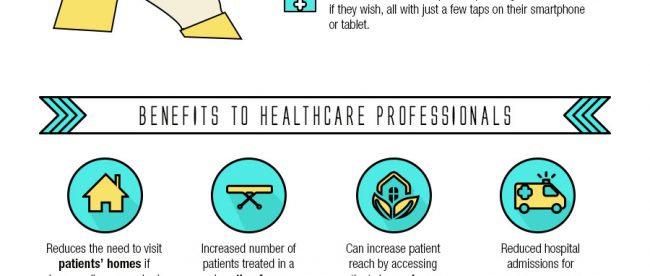This Is Healthcare Of The Future
Imagine not having to organize a visit to your nearest primary care physician because they can “visit” you virtually through hologram technology. You won’t have to imagine for much longer – this is the future of healthcare.

Potential Savings of Virtual Healthcare
- Replacing annual ambulatory patient encounters with virtual healthcare could save each of the USA’s 37,000 physicians an average of 5 minutes per encounter, a time saving equivalent with an economic value of more than $7 billion.
- If each patient has 1 in-person physical examination a year, with half of all other encounters converted to eVisits, the time savings could be the equivalent of roughly 1,500 physicians, and an annual saving of $300 million.
- A combination of 1 annual physical examination with patient self-care for the remainder of the year could save time equivalent to roughly 24,000 physicians to the tune of almost $2 billion a year.
- An average reduction on ambulatory visits by 5 minutes could add almost $63 million a year in physician capacity, equivalent to 320 physicians.
- A 5 minute time saving for an organization with 800 physicians could free up the equivalent to 140 physicians’ capacity, an annual saving of just under $28 million.
How virtual healthcare can revolutionize the industry
- More clinical care work can be completed without the need to increase the supply of physicians.
- Virtual healthcare models can expand physician capacity by enabling of patients to care for themselves, the replacement of time consuming labor with technology, and the automation of healthcare tasks.
- A combination of these can streamline the work of physicians, decrease the demand for physicians, and allow physicians to focus their time and resources where it is most needed.
- More available time results in coverage for more patients and also better treatment for patients.
Examples of virtual healthcare technology
1. Hologram House Calls
This allows for a physician to visit their patients anywhere in the world as a life-size hologram next to the patient, conducting the conversation as if it was an ordinary phone call.
It would be particularly beneficial to patients who live in remote areas and are unable to access transport services to hospitals and clinics, or to those with a serious condition which physically prevents them from visiting a physician.
2. Virtual Doctor App
The app asks users to enter their specifics (age, medical condition, family’s medical history), and then provides information about various treatments specifically tailored to them.
The user then has the option of pursuing these treatments if they wish, all with just a few taps on their smartphone or tablet.
Benefits to Healthcare professionals
- Reduces the need to visit patients’ homes if house calls are required
- Increased numbers of patients treated in a given timeframe
- Can increase patient reach by accessing patients in rural areas
- Reduced hospital admissions for non-emergency situations.
- Monitoring long term patient care while the patient recovers at home.
- New revenue streams through virtual consultations
- Easier to access patient information
Benefits to Patients
- Reduces the need to travel to hospitals/clinics for treatment or to book an appointment
- Increased likelihood of receiving instant treatment
- Prescriptions refilled automatically
- Easier to reschedule appointments
- Receive tailored advice & updates direct to their mobile device
Challenges Faced By Virtual Healthcare
- Need for licensing for any physicians providing telemedicine services
- Physicians who oppose the use of virtual healthcare technology
- Doubts about reimbursement for virtual medical services through existing payment models
- Costs & labor involved in installation & streamlining of virtual healthcare technology
- Potential security risks to patient data
Industry opinions
The people quoted here are in no way affiliated to Home Healthcare Adaptations.


Leave a comment